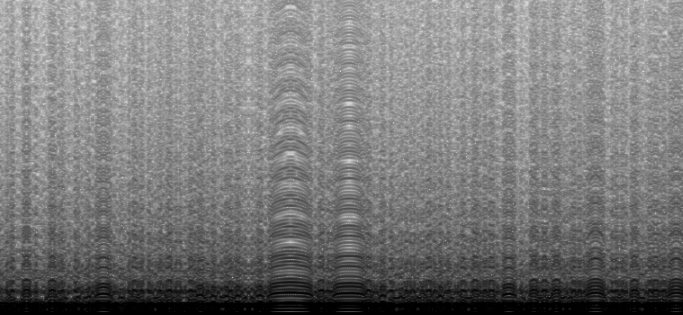And so, I've been toying with the idea of using physics simulations to generate audio.
I imagined a double pendulum playing music, as if the tip were the needle on a record player. As the needle moves clockwise, the music plays. If the needle moves counter-clockwise, the music is played backwards. The faster the needle moves, the faster (and higher pitched) the sound.
I modeled the pendulum, even creating a UI in VPython. I used some drum loops as source audio. The result wasn't as "chaotic" (in the colloquial sense) as I had wanted, though.
So then I used the data directly. I took a model of a double pendulum, and recorded the height (y) of the longer leg over time. Then, I interpreted that data as raw audio samples.
The results can be heard here. One can hear buzzing noises that do have a tone, the more periodic fragments are heard as jumps from noizy buzzing to focused buzzing.
And, the spectrogram plot of frequency over time is haunting:

I'll have to look further into this.